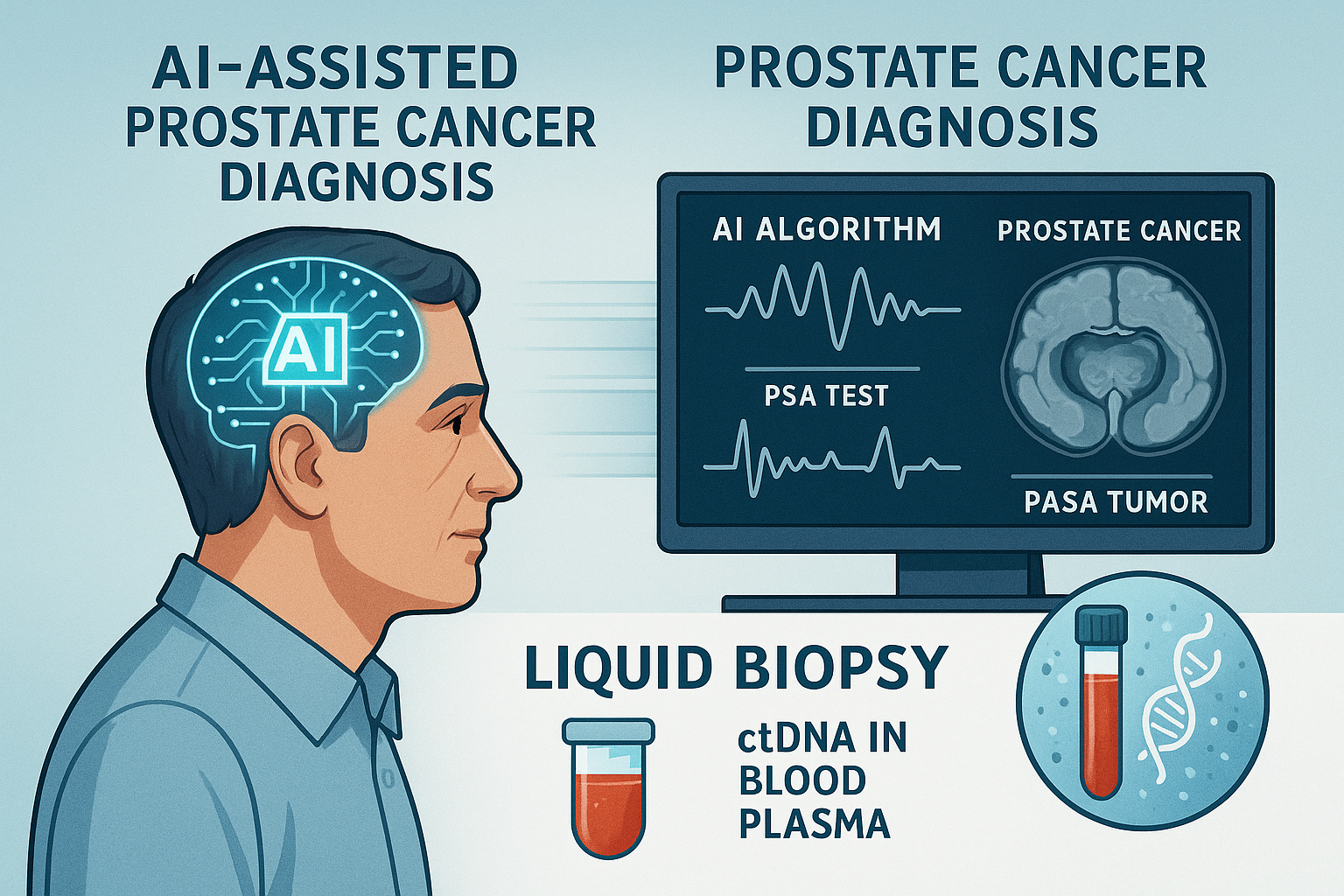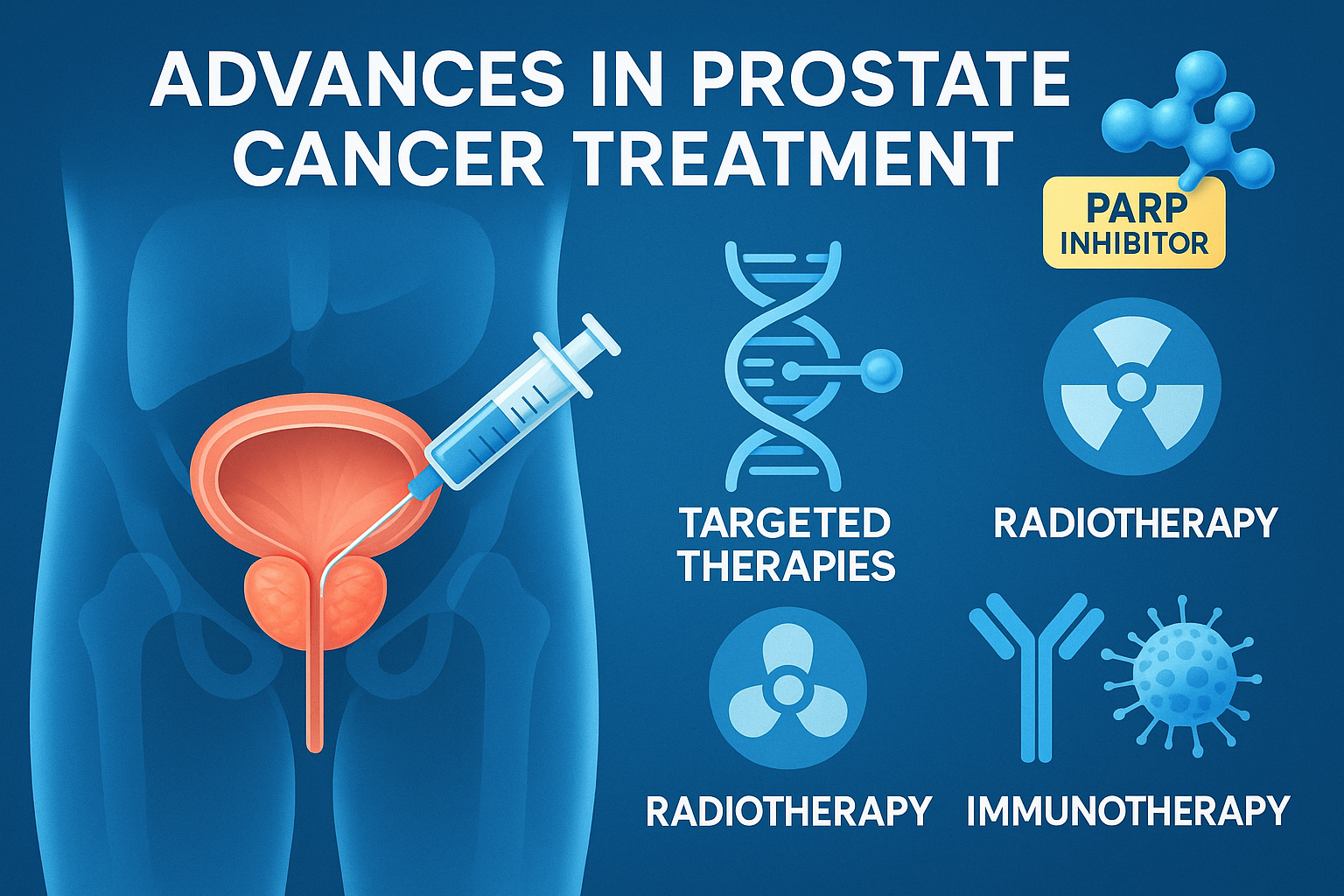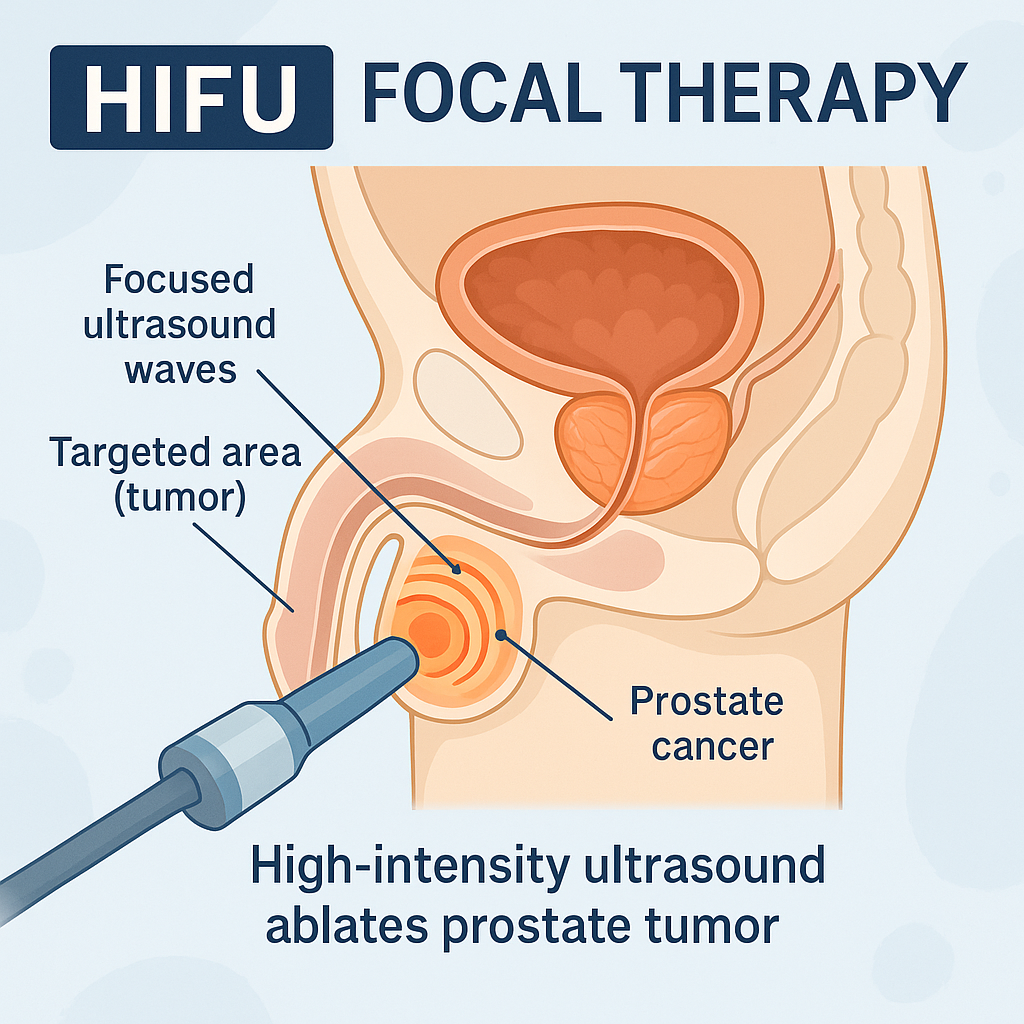Book Appointment Now

The Latest Advances in Prostate Cancer Treatment: What’s New in 2025?
Introduction
Prostate cancer treatment has evolved rapidly in recent years, with new therapies improving survival rates and reducing side effects. In 2025, several cutting-edge innovations are transforming the way prostate cancer is detected, treated, and managed.
From next-generation targeted therapies to AI-powered diagnostics, this article explores the latest breakthroughs and what they mean for patients battling prostate cancer.
Next-Generation Targeted Therapies
Traditional treatments like surgery, radiation, and chemotherapy remain effective, but newer targeted drugs are changing the game. These therapies attack cancer at the molecular level, offering more precision and fewer side effects.
A. PARP Inhibitors: A Game-Changer for BRCA-Related Prostate Cancer
PARP inhibitors like Olaparib (Lynparza) and Rucaparib (Rubraca) have already shown strong results in treating prostate cancer with BRCA mutations. In 2025, new clinical trials are exploring:
- Combination therapies – Using PARP inhibitors alongside hormone therapy to increase survival rates.
- New PARP inhibitors – Experimental drugs targeting additional DNA repair genes beyond BRCA.
B. Radiopharmaceuticals: Using Radiation from Inside the Body
A breakthrough therapy, Pluvicto (Lutetium-177 PSMA-617), was approved in recent years for metastatic prostate cancer. This treatment delivers radiation directly to cancer cells without harming healthy tissue.
What’s new in 2025?
- Second-generation radiopharmaceuticals are now in trials, aiming for longer-lasting effects and fewer side effects.
- Earlier-stage use – Researchers are testing whether Pluvicto is effective in treating localized prostate cancer, not just advanced cases.
C. Immunotherapy: Boosting the Body’s Defense Against Cancer
While immunotherapy has been a breakthrough in many cancers, it has been less effective in prostate cancer—until now.
- Checkpoint Inhibitors (Keytruda, Opdivo): New studies are testing these drugs in patients with DNA repair mutations or high tumor mutation burden (TMB).
- Cancer Vaccines (PROSTVAC, Sipuleucel-T/Provenge): Clinical trials are refining personalized cancer vaccines to train the immune system to fight prostate cancer cells more effectively.

AI-Powered Diagnosis and Treatment Planning
Artificial intelligence (AI) is revolutionizing how prostate cancer is detected, analyzed, and treated.
- AI-Powered Treatment Personalization – Machine learning helps oncologists choose the best therapy based on a patient’s genetic and clinical profile.
- AI-Assisted MRI & PSA Testing – New AI algorithms can detect early signs of aggressive prostate cancer more accurately than traditional PSA tests.
- AI-Driven Biopsy Analysis – Pathologists now use AI to analyze prostate cancer biopsies with 99% accuracy, reducing misdiagnoses.
Liquid Biopsies: A Non-Invasive Way to Detect and Monitor Cancer

Genetic testing isn’t necessary for everyone, but certain men should strongly consider it, including those A major breakthrough in 2025 is the expanded use of liquid biopsies—simple blood tests that detect cancer DNA fragments (ctDNA).
Why is this important?
- Early detection – Can spot aggressive prostate cancer before symptoms appear.
- Treatment monitoring – Tracks whether therapy is working or if the cancer is becoming resistant.
- Less invasive than traditional biopsies – No need for painful needle biopsies in many cases.
Companies like Guardant Health and Grail are leading the charge in bringing liquid biopsies to routine clinical practice.
Focal Therapy: Treating Cancer While Preserving the Prostate
Traditional prostate cancer treatment often involves removing or irradiating the entire prostate, leading to side effects like incontinence and erectile dysfunction. New focal therapies offer a middle ground.
A. High-Intensity Focused Ultrasound (HIFU)
HIFU uses precise ultrasound waves to heat and destroy cancer cells without harming healthy tissue.
- Minimally invasive – No surgery required.
- Fewer side effects – Lower risk of incontinence and erectile dysfunction.
- Becoming more widely available – More clinics are now offering HIFU as a standard option.
B. Cryotherapy (Freezing Cancer Cells)
This technique freezes and kills cancer cells using liquid nitrogen or argon gas.
Used for small, localized tumors.
Growing interest in combining cryotherapy with immunotherapy for a stronger effect.

Hormone Therapy 2.0: Next-Generation Androgen Blockers
Hormone therapy, or Androgen Deprivation Therapy (ADT), is a staple treatment for prostate cancer. However, resistance can develop over time.
In 2025, new drugs are emerging to counter resistance, including:ARV-110 (PROTACs Technology) – A drug that degrades androgen receptors instead of just blocking them, offering a new approach for resistant cancers.
Next-Gen Androgen Blockers (Relugolix, Darolutamide) – New hormone therapy drugs that are more effective and have fewer side effects than older treatments like Lupron.
Personalized Medicine & Genetic Testing for Treatment Decisions
Genetic testing is playing a bigger role than ever in prostate cancer treatment.
- Comprehensive genetic profiling – More patients are now getting their tumors sequenced to find targetable mutations.
- Clinical trials for rare mutations – Researchers are expanding drug trials for less common genetic changes in prostate cancer.
- AI + genetics – AI is now being used to predict which treatments will work best based on genetic test results.
What’s Next? The Future of Prostate Cancer Treatment
Tumor Microenvironment Targeting – Scientists are exploring ways to disrupt cancer’s support system, cutting off nutrients and immune evasion mechanisms.
Gene Editing (CRISPR) – Researchers are investigating gene-editing approaches to correct mutations in prostate cancer cells.
New Drug Delivery Systems – Nanotechnology and microrobots could help deliver drugs directly to cancer cells with higher precision and fewer side effects.
Conclusion
In 2025, prostate cancer treatment is more precise, less invasive, and more personalized than ever before. Thanks to AI, genetic testing, liquid biopsies, and advanced therapies, men diagnosed with prostate cancer have more options and better outcomes than ever before.
Key Takeaways:
- PARP inhibitors and radiopharmaceuticals are revolutionizing advanced prostate cancer treatment.
- AI and liquid biopsies are making diagnosis and monitoring more accurate and less invasive.
Focal therapies like HIFU and cryotherapy are preserving prostate function while treating cancer. - Next-generation hormone therapy and immunotherapy are improving survival for advanced-stage patients.
Personalized medicine based on genetics is tailoring treatments to each individual.
The future of prostate cancer treatment is bright, and with continued research, survival rates and quality of life will continue to improve.
Sources:
Combination Therapies with PARP Inhibitors:
AI in Prostate Cancer Diagnosis
Applications of Artificial Intelligence in Prostate Cancer Care: A Path to Enhanced Efficiency and Outcomes




